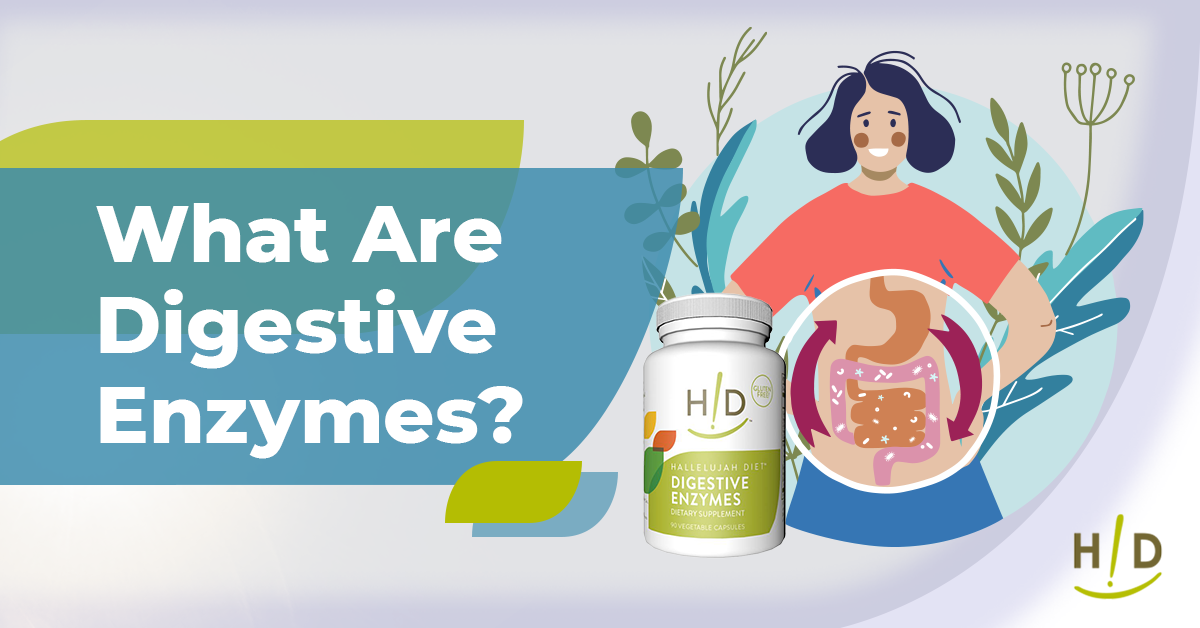As inconsequential as digestive enzymes may seem, these vital materials are what make life possible. Digestive enzymes are the fuel that runs your digestive system on every level. Breaking down food materials, nutrient absorption, and regular elimination processes all depend on the health of this enzyme system. If you’re like so many others who experience digestive problems on a regular basis, there’s a good chance your enzyme levels may be off. Here’s an overview of what they are and what they do, along with information on how you can help support your enzyme health.
 Your gut produces different types of enzymes to accommodate the different types of nutrients the body needs. The three primary digestive enzymes are lipase, protease, and amylase. Lipase breaks down fats. Protease breaks down proteins. Amylase breaks down carbohydrates.
Your gut produces different types of enzymes to accommodate the different types of nutrients the body needs. The three primary digestive enzymes are lipase, protease, and amylase. Lipase breaks down fats. Protease breaks down proteins. Amylase breaks down carbohydrates.
 Digestive enzyme supplements can go a long way toward improving digestive health, especially if you experience digestive discomfort on a regular basis or eat lots of processed foods. While the body does produce digestive enzymes on its own, it loses this ability with age, so the risk of developing enzyme deficiencies increases with each passing year.
Taking a digestive enzyme supplement at the start of each meal helps support healthy digestion and nutrient absorption. In the process, the body’s health will likely improve, as cells and tissues begin to receive the nutrients they need.
All in all, digestive enzymes serve vital roles in keeping your digestive system working. Without adequate levels of enzymes, the body’s systems start to break down. For these reasons, the health of your digestive system determines the health of the body on all levels.
Digestive enzyme supplements can go a long way toward improving digestive health, especially if you experience digestive discomfort on a regular basis or eat lots of processed foods. While the body does produce digestive enzymes on its own, it loses this ability with age, so the risk of developing enzyme deficiencies increases with each passing year.
Taking a digestive enzyme supplement at the start of each meal helps support healthy digestion and nutrient absorption. In the process, the body’s health will likely improve, as cells and tissues begin to receive the nutrients they need.
All in all, digestive enzymes serve vital roles in keeping your digestive system working. Without adequate levels of enzymes, the body’s systems start to break down. For these reasons, the health of your digestive system determines the health of the body on all levels.
What Are Digestive Enzymes? – The Catalysts of the Digestive Tract
The health of the human body relies on the success of trillions of chemical reactions each day. These chemical processes happen on a cellular level and also on a system-wide level. Enzymes are the catalysts that make these reactions happen. Likewise, for the digestive tract or gut, digestive enzymes make digestion possible. Digestive enzymes consist of minuscule chains of amino acids bound together to form proteins.. Different types of enzymes reside in your stomach, small intestines, mouth, and pancreas, with each type carrying out a specific task in the digestive process. From breaking down food in the mouth to separating food into its component nutrients in the stomach and small intestines, enzymes trigger the chemical reactions that make nutrient absorption possible. This means, when enzyme levels run low, your whole digestive process suffers.Enzymes & Your Digestion Process
The primary role of digestive enzymes is to convert food into nutrients to a form that can be used efficiently by the body’s cells and systems. As foods move through your digestive tract, they are gradually broken down until their particles are small enough to be absorbed into the bloodstream. From there, the bloodstream delivers nutrients to every cell of the body. Enzyme secretions in the mouth, stomach, intestines, and pancreas make all of this possible. Enzymes in the mouth assist the teeth with breaking down large pieces of food. These enzymes also begin the process of separating food material into fats, proteins, and carbohydrates. Once food reaches the stomach, stomach muscles contract to mix the food as enzymes and other fluids continue to break food materials down. As the food reaches the small intestines, it’s turned into molecular form. In this form, it can pass through the cell membranes that line the small intestine into the bloodstream. From there, the pancreas secretes whatever types of enzymes are needed to convert different types of food into materials the body’s cells can use. Food materials that can’t be digested move into the colon, where our microbiota feeds on whatever foods didn’t get digested and assimilated, like resistant starch and fiber and protein, in the case of an animal protein-rich diet.Types of Digestive Enzymes
 Your gut produces different types of enzymes to accommodate the different types of nutrients the body needs. The three primary digestive enzymes are lipase, protease, and amylase. Lipase breaks down fats. Protease breaks down proteins. Amylase breaks down carbohydrates.
Your gut produces different types of enzymes to accommodate the different types of nutrients the body needs. The three primary digestive enzymes are lipase, protease, and amylase. Lipase breaks down fats. Protease breaks down proteins. Amylase breaks down carbohydrates.
- Lipase breaks down fats and triglycerides into fatty acids and glycerol
- Protease breaks down proteins into amino acids
- Amylase breaks down carbohydrates and starches into simple sugars
Enzyme Deficiencies and Their Effects
Today’s Standard American Diet does little to promote healthy digestion and actually compromises gut health in general. Eating a diet high in fats, sugar, and processed ingredients with little to no fiber is a recipe for digestive problems of all kinds. In effect, these foods harm the digestive tract, as well as interfere with healthy enzyme activity. When enzyme levels start to drop off, any number of digestive and/or health problems can result, some of which include:- Food allergies
- Excess gas
- Nausea
- Bloating
- Constipation
- Arthritis
- Acne
- Depression
Boost Your Digestive Health with Digestive Enzyme Supplements
 Digestive enzyme supplements can go a long way toward improving digestive health, especially if you experience digestive discomfort on a regular basis or eat lots of processed foods. While the body does produce digestive enzymes on its own, it loses this ability with age, so the risk of developing enzyme deficiencies increases with each passing year.
Taking a digestive enzyme supplement at the start of each meal helps support healthy digestion and nutrient absorption. In the process, the body’s health will likely improve, as cells and tissues begin to receive the nutrients they need.
All in all, digestive enzymes serve vital roles in keeping your digestive system working. Without adequate levels of enzymes, the body’s systems start to break down. For these reasons, the health of your digestive system determines the health of the body on all levels.
Digestive enzyme supplements can go a long way toward improving digestive health, especially if you experience digestive discomfort on a regular basis or eat lots of processed foods. While the body does produce digestive enzymes on its own, it loses this ability with age, so the risk of developing enzyme deficiencies increases with each passing year.
Taking a digestive enzyme supplement at the start of each meal helps support healthy digestion and nutrient absorption. In the process, the body’s health will likely improve, as cells and tissues begin to receive the nutrients they need.
All in all, digestive enzymes serve vital roles in keeping your digestive system working. Without adequate levels of enzymes, the body’s systems start to break down. For these reasons, the health of your digestive system determines the health of the body on all levels.







